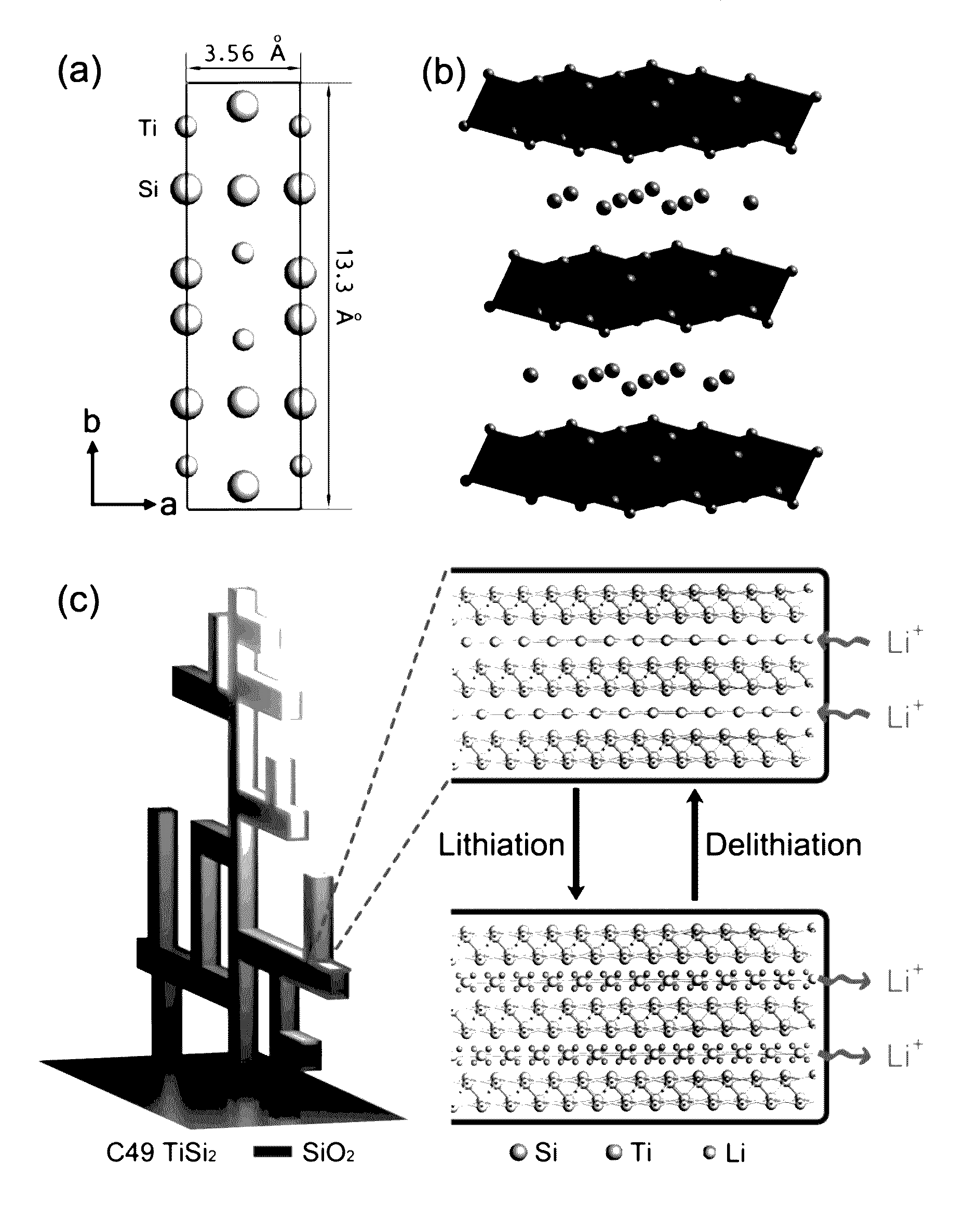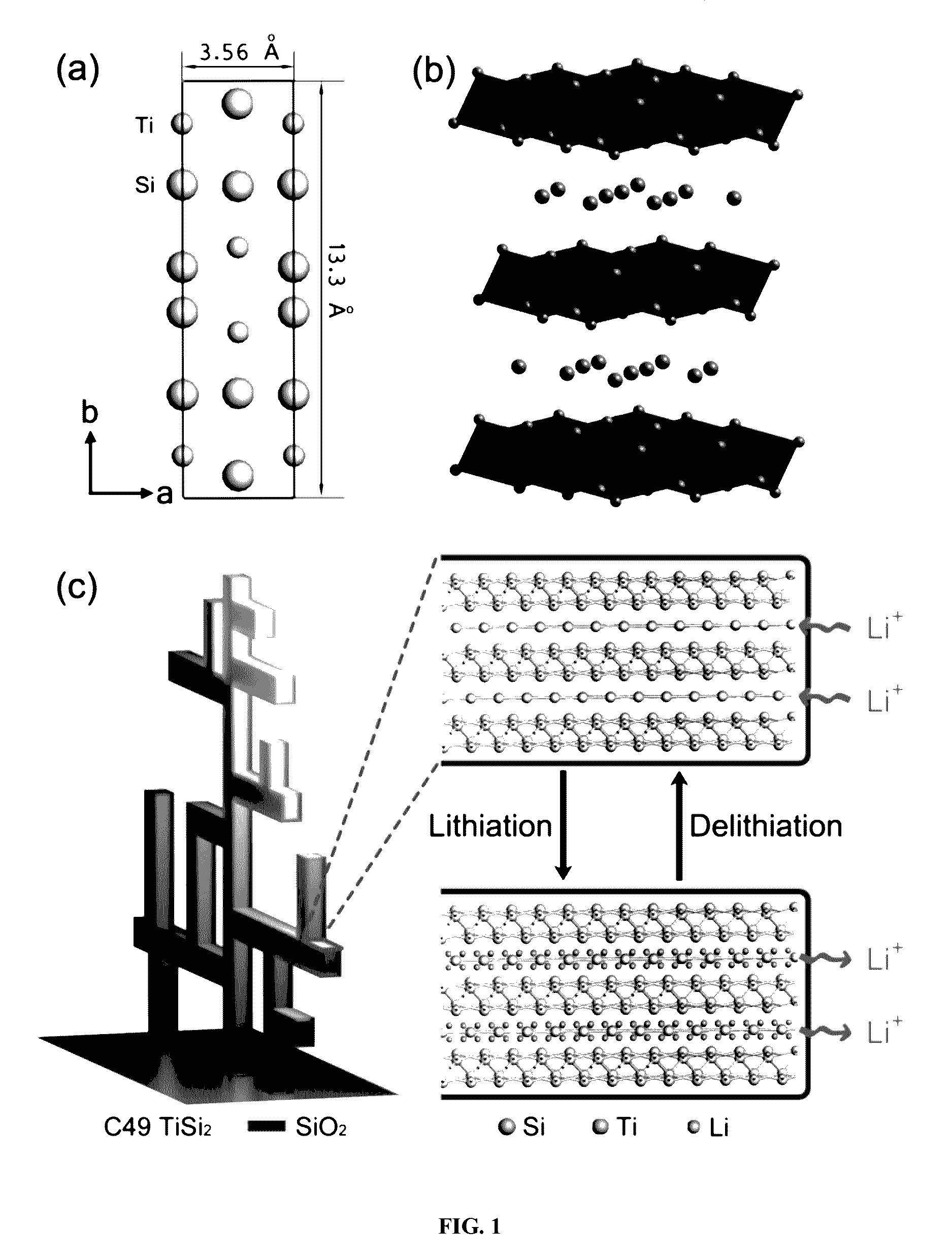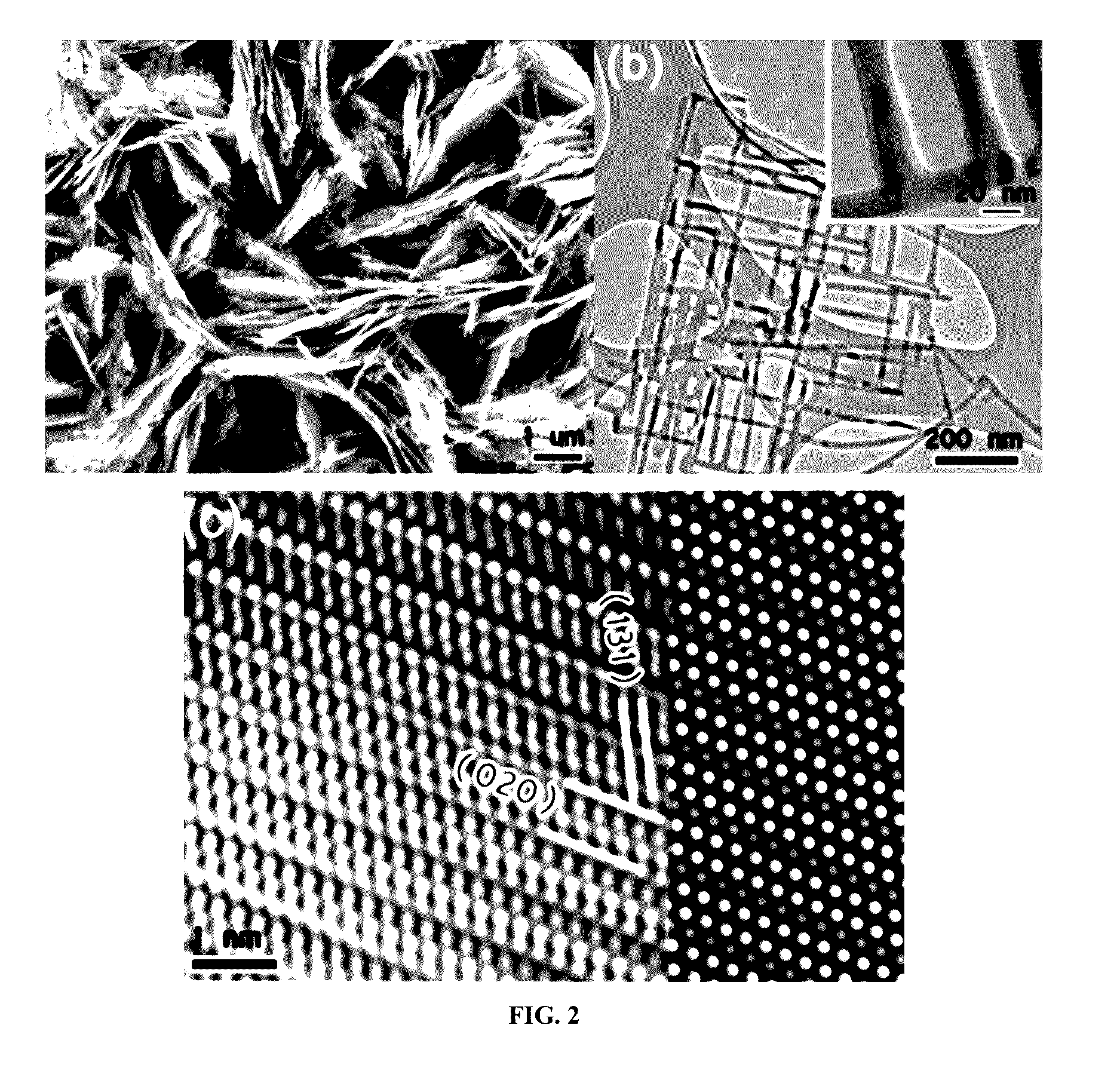Layered titanium disilicide, method of preparation and applications thereof
a titanium disilicide and titanium technology, applied in the field of new materials having layered structures, can solve the problems of low material cost and production cost, and achieve the effect of high repeatability ionic insertion and extraction, high gravitational capacity and improved charge and discharge performance of tisi2
- Summary
- Abstract
- Description
- Claims
- Application Information
AI Technical Summary
Benefits of technology
Problems solved by technology
Method used
Image
Examples
examples
[0047]The TiSi2 nanonets were obtained via the reaction between TiCl4 and SiH4 in a H2-rich environment. A moderate growth temperature of 675° C. and a short growth time of 12 minutes yield a dense deposition. The average areal density of the synthesis was approximately 100 μg cm−2. The oxide overlayer was formed by exposing as-synthesized TiSi2 nanonets to ambient air at 350° C. and allowing them to cool to room temperature naturally. A TEM micrograph in the insert of FIG. 2 demonstrates that a 4 nm oxide coating, amorphous in nature, was obtained. Other oxidation conditions, including different temperatures, durations, or a combination of the two were also studied, and it was found that the reported conditions produced the best results. As will be discussed in more detail later, oxide coatings achieved via other methods such as atomic layer deposition (ALD) serve the purpose of stabilizing TiSi2 almost as well.
[0048]Shown in FIG. 2 are microstructures of oxide-coated TiSi2 nanonet...
PUM
| Property | Measurement | Unit |
|---|---|---|
| thickness | aaaaa | aaaaa |
| thickness | aaaaa | aaaaa |
| thickness | aaaaa | aaaaa |
Abstract
Description
Claims
Application Information
 Login to View More
Login to View More - R&D
- Intellectual Property
- Life Sciences
- Materials
- Tech Scout
- Unparalleled Data Quality
- Higher Quality Content
- 60% Fewer Hallucinations
Browse by: Latest US Patents, China's latest patents, Technical Efficacy Thesaurus, Application Domain, Technology Topic, Popular Technical Reports.
© 2025 PatSnap. All rights reserved.Legal|Privacy policy|Modern Slavery Act Transparency Statement|Sitemap|About US| Contact US: help@patsnap.com



